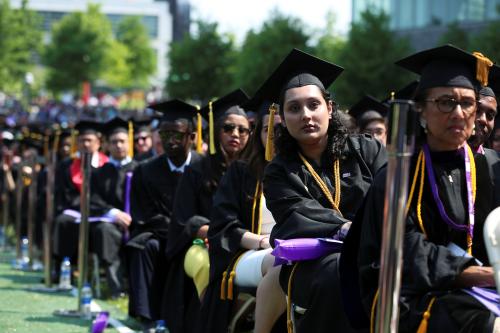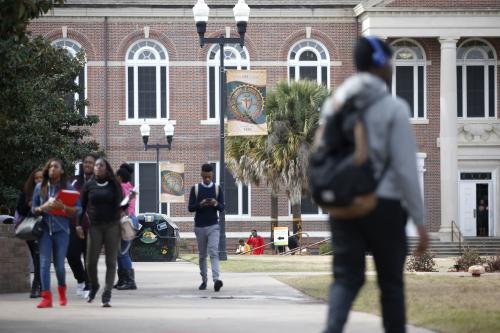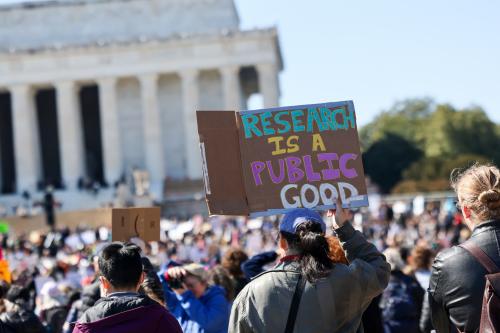This paper was written in conjunction with the Accountability in higher education event on September 8, 2020. The PDF download was updated on June 3, 2021 to correct minor errors – no substantive changes were made.
The federal government invests significant taxpayer resources each year to support students’ access to and success in postsecondary education. The main source of this support comes from federal student financial aid programs created under Title IV (TIV) of the Higher Education Act. In addition to these public funds, in many cases students and their families face significant out-of-pocket costs for postsecondary education. It is clear some of the dollars are not well spent, and, as a result, federal assistance programs designed to promote upward mobility and economic success instead do harm by subsidizing the exploitation of students’ time and resources. Even very good investments may have substantial downside risks, and even the best higher education programs will have some students who fail to graduate, do not obtain employment, or struggle to repay their student loans. While eliminating all financial risk is not a realistic goal, it is irresponsible and imprudent to ignore the predictable harm of subsidizing students’ enrollment at programs or institutions where adverse financial outcomes are expected or the norm.
In this paper, we outline a framework for an accountability system that would link federal financial aid eligibility to students’ post-college outcomes and provide estimates of the benefits such a system might yield for students. We make the case for a conservative first step towards a comprehensive accountability system that sets minimum eligibility standards for programs offered by Institutions of Higher Education. These standards are based on two direct measures of student outcomes – earnings and loan repayment – with thresholds motivated by commonsense categorizations of unacceptable performance. In essence, the standards we propose would classify programs as eligible to participate in federal financial aid programs if either a) former students are able to make minimal, literally any, progress towards repaying what they borrow to attend; or b) a majority of former students find employment with earnings high enough to leave them no financially worse off than individuals with lower levels of education (high school graduates for those pursuing undergraduate credentials, and bachelor’s degree holders for those pursuing graduate degrees) after accounting for the money they paid to attend college.
Read the complete framework here.
The authors did not receive financial support from any firm or person for this article or from any firm or person with a financial or political interest in this article. Neither author is currently an officer, director, or board member of any organization with an interest in this article.
The Brookings Institution is committed to quality, independence, and impact.
We are supported by a diverse array of funders. In line with our values and policies, each Brookings publication represents the sole views of its author(s).







